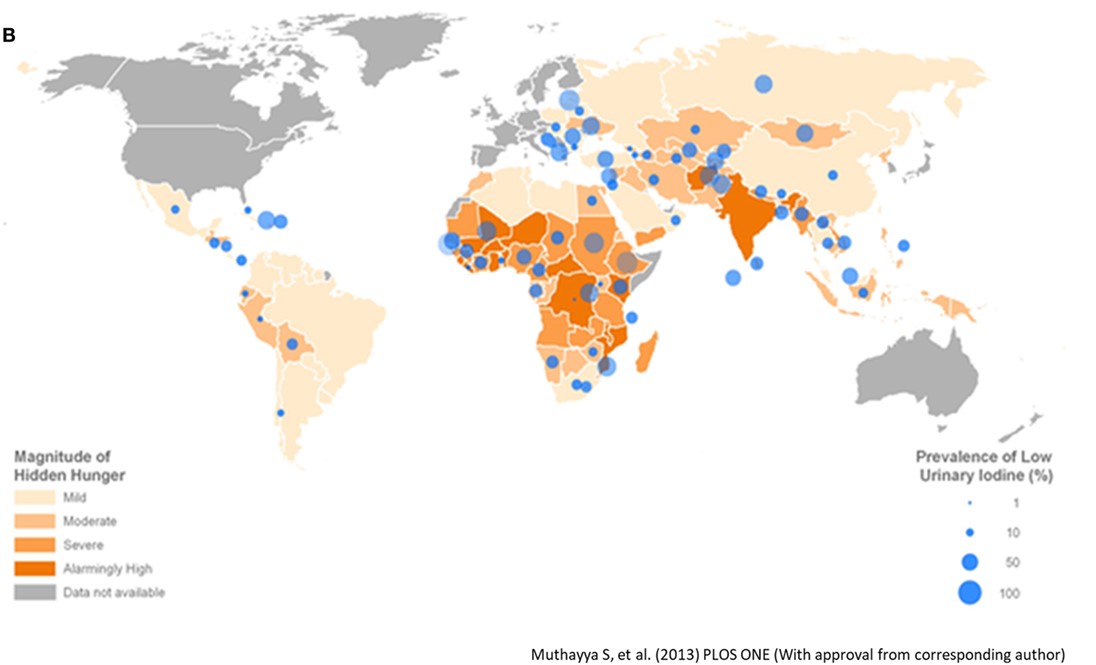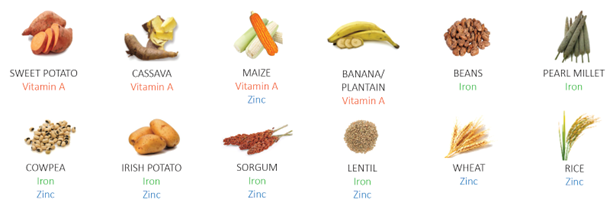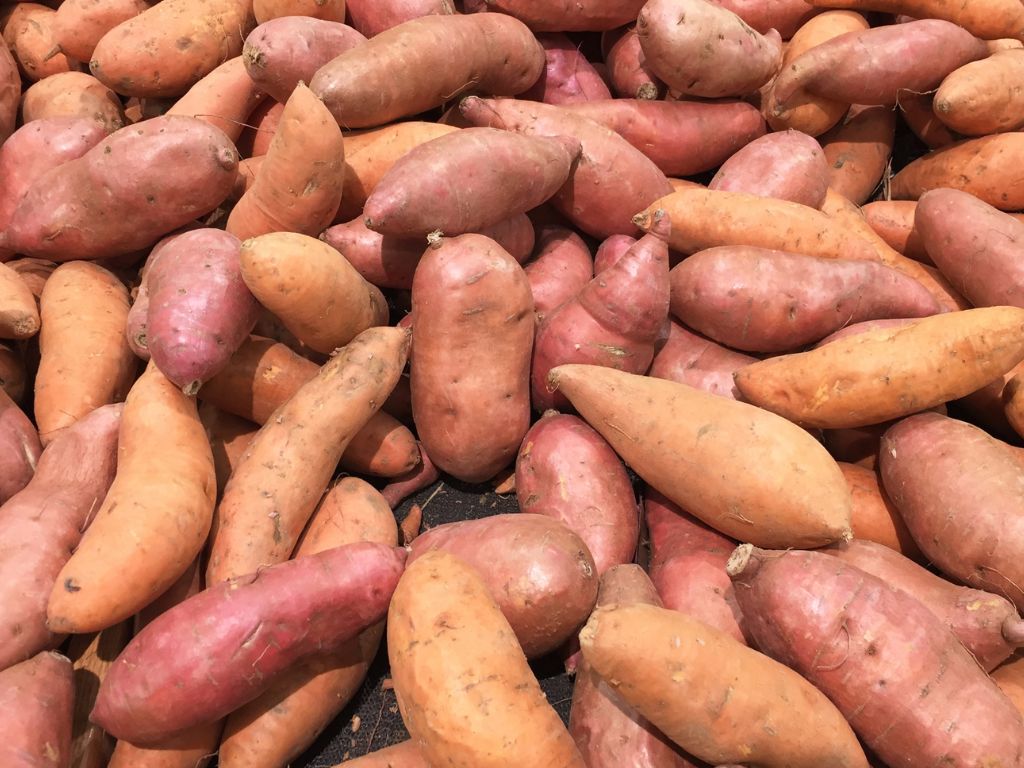Biofortification: A Sustainable Solution to Hidden Hunger and Malnutrition
Imagine a situation where you have access to food, but it lacks essential vitamins and minerals your organism needs to stay healthy. This is the reality for billions of people worldwide, called “hidden hunger.” It is a more complex and less visible aspect of hunger. Solving this problem is not just about filling the stomach with food; it is about ensuring people eat food that is nutritious and healthy.
Hidden hunger seriously affects the physical and mental well-being of individuals and societies. It can lead to chronic malnutrition and illness, affect cognitive development, and, in the worst cases, death.

Global map representing hidden hunger index and low urinary iodine concentration
The important question we need to answer is: How can we tackle this issue and ensure everyone can access nutritious food?
Fortunately, there is an effective and sustainable solution called “Biofortification.”
The Concept of Biofortification
What is Biofortification?
Biofortification, or biological fortification, is a process that involves enhancing the nutritional content of food crops, particularly micronutrients such as vitamin A, zinc, and iron. This is achieved through various techniques, like modern biotechnology and conventional plant breeding, to improve the nutritional qualities of crops as they grow on the farm.
Consequently, it increases the vitamin and mineral content of staple crops, such as rice, wheat, maize, and beans, which are crucial components of the diets of many low-income families. When addressing hidden hunger, biofortification is an indispensable approach to combat chronic micronutrient deficiencies in the diet.
In addition to improving nutrition, biofortification contributes to increased food security and higher yields. This makes it a sustainable and cost-effective approach.
Bio-fortified Food Crops – Examples
Biofortification initiatives led by scientists and agricultural experts have focused on enhancing the vitamin A, iron, and zinc micronutrient content of staple crops to address hidden hunger. This deliberate focus stems from these essential elements’ considerable nutritional and health benefits.
Some biofortified food crops include: rice, wheat, maize, and beans. 
- Zinc Rice
Zinc rice is a biofortified rice variety developed to address zinc deficiency, a significant public health concern in many developing countries. This deficiency can lead to serious health consequences, such as impaired growth and a weakened immune system.
Also, unlike golden rice, known for its distinctive golden color due to beta-carotene, zinc-biofortified rice enriches the grain with essential zinc without altering its color. This process enhances the immune system and the body’s ability to resist infections and diseases.
To assess its impact, a study was conducted in Bangladesh to measure Zinc rice consumption of kids aged 12-36 months who ate zinc rice every day for nine months. Surprisingly, it didn’t change how much zinc they had in their bodies. But here’s the exciting part: by the end of the study, these kids were taller than those who ate regular rice.
- Iron-rich beans
Another food solution is biofortified beans. Beans are a staple in the diets of approximately 400 million individuals in the tropics, and they provide essential nutrients such as protein, fiber, and complex carbohydrates. However, they are generally insufficient in providing significant quantities of iron.
Iron deficiency is a prevalent global health issue, particularly affecting women and children. Women often require increased iron due to blood loss during menstruation, pregnancy, and childbirth, while children need ample iron for growth and development. Moreover, insufficient dietary iron can lead to impaired cognitive and physical development in children and pose risks to women and babies during childbirth.
However, developing and adopting iron-biofortified beans have demonstrated that regular consumption will significantly contribute to daily iron needs. For instance, a study in Rwanda involving iron-depleted female university students (18-27 years old) showed a substantial increase in iron status after consuming iron-biofortified beans daily for 4.5 months.
- Vitamin A-Biofortified Maize
For millions in sub-Saharan Africa and Latin America, maize is a staple and essential human food crop. It is also one of the most genetically diverse crops in the world. Over 900 million people depend on maize as their staple food, with Africa contributing to over 300 million. Although maize provides sufficient energy, it is low in some essential vitamins and minerals, like vitamin A and zinc.
Furthermore, vitamin A deficiency is one of the most common forms of undernourishment in the developing world. According to UNICEF, 140 million children are at risk of illness and even death due to this deficiency. To address this, biofortified maize has been bred to contain higher levels of provitamin A carotenoids, which are converted into vitamin A in the body. This maize type improves good health and holds the potential to confer protection against malnutrition-induced blindness.
In addition, a study conducted in Zambia revealed that children aged 4-8 years old who were vitamin A deficient experienced significant improvements in their visual ability to see in dim light conditions after consuming vitamin A-biofortified maize.

- Provitamin A Carotenoid-Biofortified Potatoes
Potatoes are enjoyed in various forms, such as mashed, baked, or fried potatoes. Despite their widespread popularity, they are often considered fattening due to their high starch content. Also, their consumption has been linked to weight gain and other health issues.
The need to enhance the nutritional profile of potatoes led to the biofortification process. This effort has been particularly successful in the case of provitamin A-biofortified potatoes, also known as orange-fleshed variety.
Furthermore, this development has been a significant step in addressing vitamin A deficiency and has improved the health of over 5 million people in rural areas across Africa and Asia. In addition, these biofortified sweet potatoes are not only nutritious but can be eaten raw, like carrots, and are a great way to boost vitamin A intake and improve overall health.
For instance, Nigeria’s most consumed staple foods are traditional white non-biofortified cassava, maize, and sweet potatoes, which are low in essential micronutrients. However, to make over 2.5 million people food secure, Nigeria has incorporated provitamin A cassava and orange-fleshed sweet potatoes (OFSP) in its Growth Enhancement Support Scheme.
How Farmers Can Implement and Adopt Biofortified Crops
Having discussed the benefits of biofortification, farmers’ adoption of biofortified crops is crucial for their successful implementation and widespread benefits.
Here are some key factors that can help farmers implement and adopt biofortified crops:
- Education Initiatives: Government agencies, NGOs, and extension organizations can educate farmers about biofortified crops and their cultivation practices to increase adoption.
- Access to Seeds: Collaboration with agricultural agencies is essential to ensure farmers have easy access to biofortified seeds, as this will facilitate widespread adoption.
- Extension Services: Strengthening extension services by providing on-the-ground support and guidance to farmers throughout the cultivation and harvesting phases.
- Market Integration: Collaborating with market stakeholders to create avenues for biofortified crops and to ensure farmers have viable markets and fair prices.
Conclusion
We can beat hidden hunger globally through crop biofortification and achieve Sustainable Development Goal 2: Zero Hunger. This fortification approach enhances the nutritional content of staple crops like rice, maize, beans, and potatoes, which is a cost-effective solution to address malnutrition. However, integrating efforts involving farmers, policymakers, and researchers is essential to encourage its adoption.
References
Improving nutrition through biofortification: a review of evidence from HarvestPlus, 2003 through 2016
YPARD. (2017). Biofortification: A Lifesaver for Women and Children. https://ypard.net/resources/blog/biofortification-a-lifesaver-for-women-and-children
CGIAR. (n.d.). Biofortified Crops Address the World’s Hidden Hunger. https://www.cgiar.org/news-events/news/biofortified-crops-address-the-worlds-hidden-hunger/
Finkelstein, J. L., Fothergill, A., Hackl, L. S., Haas, J. D. & Mehta, S. Iron biofortification interventions to improve iron status and functional outcomes. Proc. Nutr. Soc. 78, 197–207 (2019).
Jongstra, R. et al. The effect of zinc-biofortified rice on zinc status of Bangladeshi pre-school children: a randomized, double-masked, household-based controlled trial. Am. J. Clin. Nutr. (In press).
Haas, J. D. et al. Consuming Iron Biofortified Beans Increases Iron Status in Rwandan Women after 128 Days in a Randomized Controlled Feeding Trial. J. Nutr. 146, 1586–1592 (2016).
Palmer, A. C. et al. Provitamin A carotenoid-biofortified maize consumption increases pupillary responsiveness among Zambian children in a randomized controlled trial. J. Nutr. 146, 2551–2558 (2016).
Biofortification of trace elements in food crops for human health NK Fageria, MF Moraes, EPB Ferreira… – Communications in Soil …, 2012 – Taylor & Francis
Bouis, P., Bouis, H. E., & Saltzman, A. (2017). Improving nutrition through biofortification: A review of evidence from HarvestPlus, 2003 through 2016. Global Food Security.
Nestel, P., Bouis, H. E., Meenakshi, J. V., & Pfeiffer, W. H. (2006). Biofortification of staple food crops. The Journal of Nutrition, 136(4), 1064S-1067S. doi: 10.1093/jn/136.4.1064S.
Garcia-Casal, M. N., Peña-Rosas, J. P., & Giyose, B. (2017). Staple crops biofortified with increased vitamins and minerals: considerations for a public health strategy. Annals of the New York Academy of Sciences, 1390(1), 3-13. doi: 10.1111/nyas.13304.
Garg, M., Sharma, N., Sharma, S., Kapoor, P., Kumar, A., Chunduri, V., & Arora, P. (2018). Biofortified crops generated by breeding, agronomy, and transgenic approaches are improving lives of millions of people around the world. Frontiers in Nutrition, 12.










































































